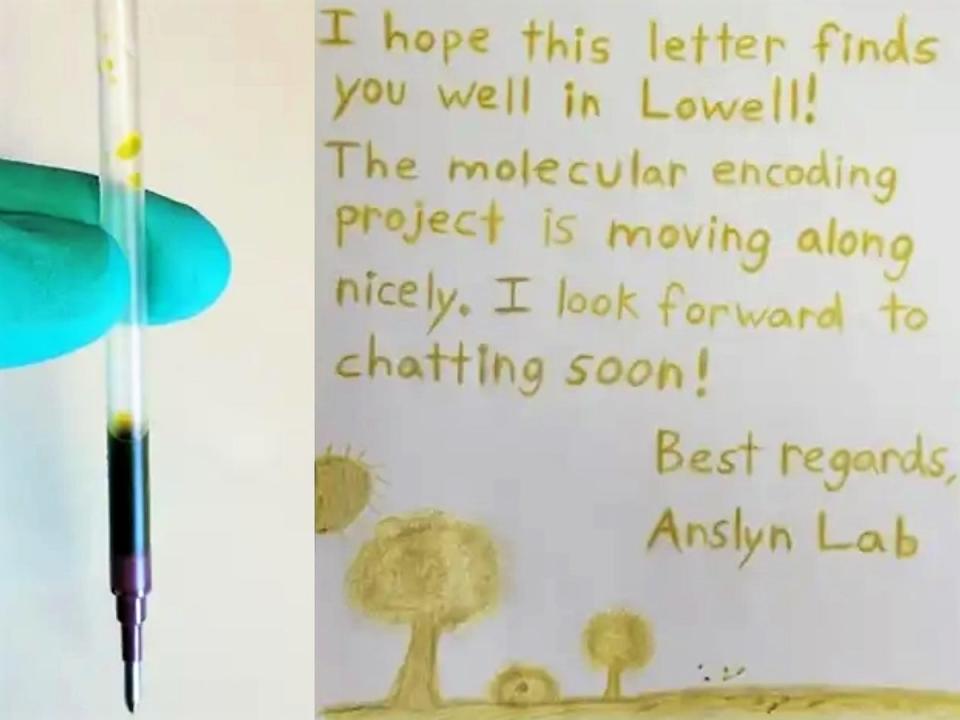Scientists figure our how to store secret data in ink

Scientists have created an ink that is capable of hiding an encryption key for decoding hidden secret messages.
The steganography technique, developed at the University of Texas, was used to hide a key to unlock a text file of The Wonderful Wizard of Oz within a 30-word letter.
A sample of the ink, which contains polymers that store the data, is all that was needed to serve as the cipher to unlock the encrypted file.
“Because they’re a polymer with a very specific sequence, the units along that sequence can carry a sequence of information, just like any sentence carries information in the sequence of letters,” Eric Anslyn from the University of Texas told the New Scientist.
“The information density is mind-boggling.”
Alan Woodward from the University of Surrey added: “The idea of writing a message but the real, hidden message is contained in the molecular structure of the ink is fascinating, although maybe not the most practical method.”
The researchers hope to continue developing the technique in order to find real-world applications for the technology, such as hiding secret messages in letters and plastic objects.
“This paradigm has significant potential for widely accessible molecular information storage and encryption,” concluded a paper detailing the achiement.
“Future iterations will look to robotically automate the writing and reading processes, furthering its accessibility and practicality for real-world applications.”
The paper, titled ‘Molecular encryption and steganography using mixtures of simultaneously sequenced, sequence-defined oligourethanes’, was published by the American Chemical Society this month.

 Yahoo Finance
Yahoo Finance 